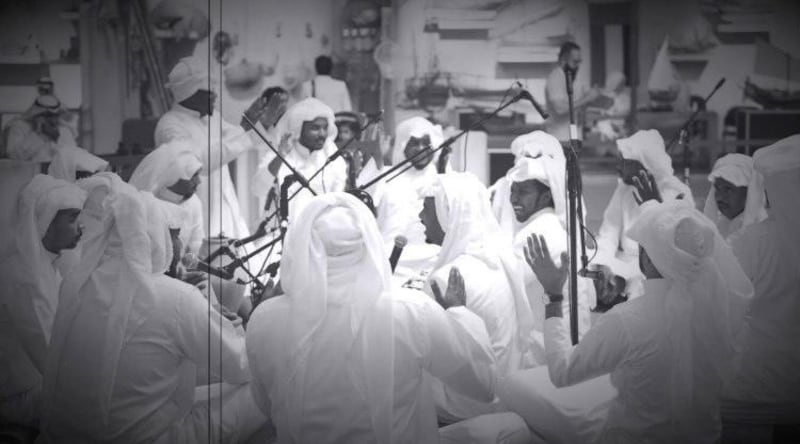Before oil was discovered in Bahrain in 1932, the majority of men were pearl divers. They’d spend months at a time sailing out to sea, scouring the ocean depths in search of the precious gemstones. It was a stressful and often dangerous profession, so they needed an outlet, something to allow them to let loose when they were off-duty.
That’s how fjiri came to fruition.
Originating in Muharraq in the 19th century, fjiri is a music and dance performance with its roots in the pearl diving tradition. Musicians – with instruments such as finger chimes, drums and a clay pot known as a jahl – sit around the edge of a circle, while a lead singer and dancers occupy the centre.
At once frantic, rhythmic and hypnotic, fjiri expresses the deep connection between Bahrainis and the ocean, as well as reflecting the dangerous existence of its native pearl divers.

The tradition was added to Unesco’s prestigious Intangible Cultural Heritage of Humanity list in December in a bid to boost the country’s cultural legacy. It’s hoped that the listing will lead to a wider appreciation for the art form, as well as spur an increased involvement in international festivals and concerts.
Fjiri was one of 48 nominations scrutinised for inclusion by Unesco and is the third Bahraini entry on the list, alongside forms of Arabic calligraphy, and skills and traditions related to date palms. Unesco noted that fjiri conveys “the values of perseverance, strength and resourcefulness” of Bahrain.
“The pearl diving season was about three to four months long, and most of it was spent on the sea sailing and searching for pearls,” says Talal Mattar, a sixth-generation Bahraini pearl merchant, and an expert on fjiri and its history.
“While they were on the land, the only night-time entertainment and stress relief they had was gathering in places called durs to play and sing fjiri.”
Durs could be found in many places on the Arabian Gulf coast, but the most famous were on the fringes of Bahrain’s Muharraq island. There, the off-duty pearl divers would gather to sing and dance. “Fjiri is not only an entertainment, but also stress relief for the divers,” Mattar explains.
Fjiri has a set structure, with a well-known variant involving five stages played sequentially. It begins with the fjiri bahri (a fast beat to get the players in the mood), then onto the slower and more contemplative melody of the adsani, which is designed to stir emotions. The third stage is the hadadi, which is followed by the mkholfi (“removes stress and makes the musicians more comfortable", says Mattar). Finally comes what Mattar describes as “the hip-hop of Bahrain”: fjiri hasawi.
One misconception Mattar is keen to clear up is the idea of sailors singing and playing on their ships while searching for pearls. “Fjiri is only for the land, not the sea,” he says.
While fjiri may not be as widely performed these days (“there are a lot of entertainment alternatives these days,” Mattar says, wistfully), its future remains bright. Groups in Bahrain, such as the Ismeal Dawas band in Muharraq, still practice every Wednesday evening, and the younger generation are encouraged to participate in order to preserve the practice for the future.
“As we are pearls merchants, fjiri is a part of our passion,” says Mattar. “I’m proud that it’s been added to the Unesco list.”






